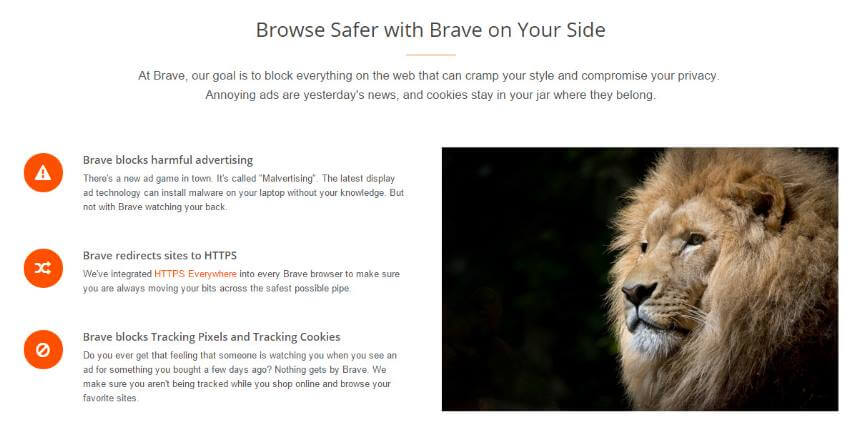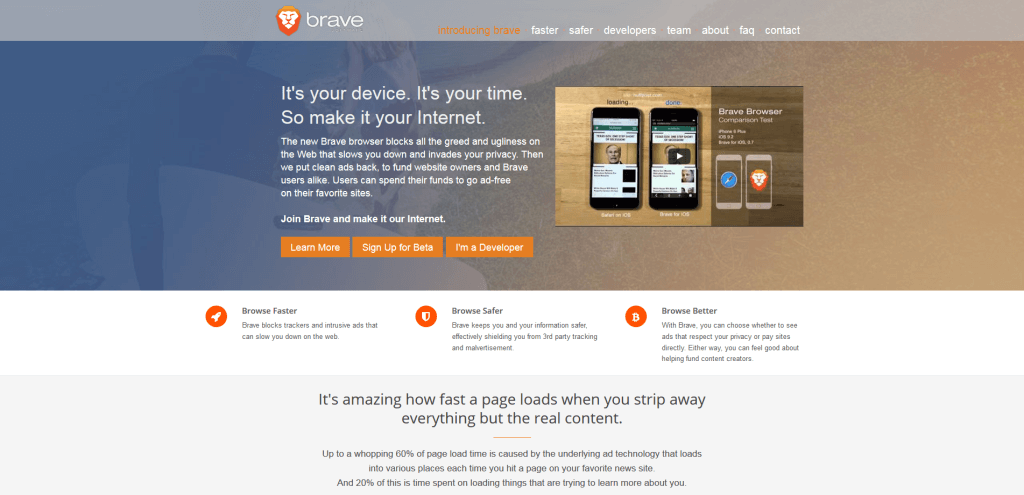Mozilla co-founder Brendan Eich unveiled his latest project, the open source Brave browser that automatically blocks ads and then replaces them with ads of its own. The company behind it, Brave Software, will take a 15 per cent cut of ad revenue generated.
The Brave and the Ad Blocked
The entire principle of the Brave browser is that it will automatically block programmatic ads and tracking cookies. At the moment, most sites with ads are running both programmatic and more standard display advertising, though the shift to programmatic is happening more and more. So far, this just sounds like Adblock plus, preventing ads from coming up while you browse – the kicker is that somehow the system will then inject its OWN programmatic ads, through ad networks that work with Brave directly.
This arstechnica article makes a number of good points – including the fact that this won’t necessarily make your browsing experience any faster – ads still have to be downloaded and will adhere to the same format (ads are highly optimized for page load times as it is). It could theoretically block malware and ads that are a complete eyesore or are poorly optimized – though most of those aren’t running on any decent programmatic platform anyway.
The idea that reputable ad networks will work with the Brave browser directly seems like an interesting premise – presumably Brave won’t have enough of a user base for ad networks to exist specifically to service it, which means that they’ll be relying on the large programmatic platforms to supply the ads. And why would those ad platforms want to support a browser that is removing ad revenue from its traditional channels and mix in an extra layer of complexity? Won’t they be paying twice (once to get served on the site and then stripped out, then again to be served by Brave)?
Even if the idea is to have a higher quality of ads with regards to format and content, what incentive is there for ad platforms to go the extra mile and do the extra work?
From the Brave Faq:
We block trackers, that’s a big win compared to the status quo. We also block eyesore ads that won’t be replaced (think of those parasite pictures in image grids at the bottom of pages). We currently replace only certain standard-sized ads, and we aim for higher quality than what would have been served in those spaces. So we reduce the total number of ads experienced by the user and increase the quality and relevance, while simultaneously blocking trackers that follow your activity across sites.
Adding to the confusion is the payment plan: 55% of ad revenue will go to the publisher, 15% will go to the ad supplier (the website), 15% will go to Brave and 15% will go to the…end user? So you’ll get paid 15% of ad revenue when you click on an ad? The logistics of this seem mind-boggling. Brave would have to develop a service that deals with the publisher, the website themselves and the users using an anonymous bitcoin system and coordinate it all together. The overhead and technology costs for such an overarching premise seem mind-bogglingly high.
I’m sure many users like the sound of it at first glance – fast, secure browser that doesn’t allow third party trackers and forces ad platforms to adhere to higher standards. But what will Brave actually be able to deliver?
The browser is now available for Mac, Windows, iOS, and Android under an open-source license in a version 0.7 release. I’ll be very curious to see where they go from here.
Contact DAC today to find out more!





